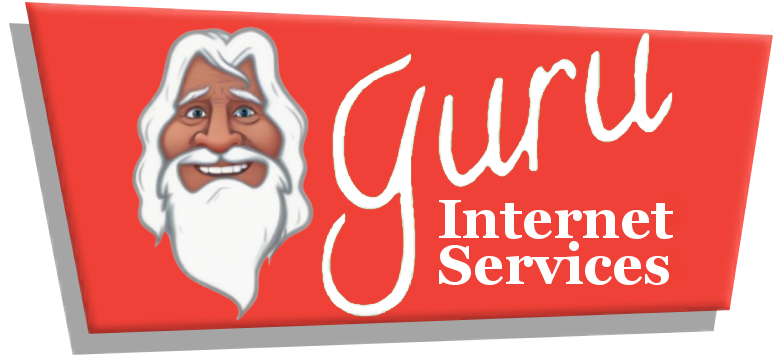
by Guru IS | Aug 16, 2024 | Digital Marketing
In today’s digital landscape, understanding the *return on investment (ROI)* of your content marketing efforts is crucial for business growth and success. With businesses allocating substantial budgets to content creation and distribution, it becomes imperative to track and measure how these investments are translating into tangible results. The term content marketing ROI refers to the revenue generated from content marketing efforts relative to the cost incurred in creating and distributing that content.
The significance of measuring content marketing ROI cannot be overstated. It allows businesses to identify which strategies are working and which ones need refinement. By analyzing metrics such as engagement rates, lead generation, and conversion rates, companies can fine-tune their content to better meet the needs of their audience and achieve greater success. Moreover, a clear understanding of ROI aids in justifying the allocation of resources towards content marketing, ensuring that every dollar spent contributes to the overall business objectives.
Are you ready to harness the power of content marketing and achieve absolute web success? Get a quote at Guru Internet Services and let us help you revolutionize your web presence with innovative design and development.
Importance of Measuring Content Marketing ROI
Measuring the *ROI of content marketing* is not just a best practice; it’s an essential component of a successful digital strategy. Without proper measurement, businesses are navigating blindly, unable to determine the effectiveness of their campaigns or make data-driven decisions. Here are several key reasons why measuring content marketing ROI is vital:
- Justifying Investment: By demonstrating the financial returns of your content marketing efforts, you can justify the budget allocated towards content creation and distribution. This is particularly important when seeking buy-in from stakeholders or securing additional funding.
- Optimizing Strategies: Measurement provides insights into which content pieces and strategies are performing well and which are not. This enables you to refine your approach, focusing on high-performing content and discontinuing or reworking underperforming efforts.
- Understanding Audience Preferences: Analyzing ROI helps you gain a deeper understanding of what resonates with your audience. This can guide future content creation to ensure it aligns with audience interests and needs, ultimately driving higher engagement and conversion rates.
- Improving Resource Allocation: By identifying the most effective content marketing tactics, you can allocate resources more efficiently, ensuring that time, money, and effort are spent on initiatives that yield the highest returns.
- Tracking Progress: Regular measurement allows you to track progress over time, providing a clear picture of how your content marketing efforts are evolving and contributing to overall business goals.
In essence, measuring content marketing ROI empowers businesses to make informed decisions, optimize their strategies, and maximize the impact of their content marketing initiatives. It’s a critical practice for any business aiming to stay competitive in the digital age.
Key Metrics for Tracking Success

Tracking the success of your content marketing efforts involves monitoring various metrics that provide a comprehensive view of your performance. Here are some *key metrics* essential for evaluating content marketing ROI:
- Website Traffic: Analyzing the number of visitors to your website helps gauge the reach of your content. Look at both overall traffic and traffic sources to understand which content channels are most effective.
- Engagement Metrics: Metrics such as time spent on page, bounce rate, and social shares indicate how well your content is resonating with your audience. High engagement suggests that your content is valuable and relevant.
- Lead Generation: Track the number of leads generated through your content. This can include form submissions, newsletter sign-ups, and other lead capture methods. The quality of the leads is just as important as the quantity.
- Conversion Rates: Conversion metrics measure the effectiveness of your content in driving specific actions, such as making a purchase or filling out a contact form. High conversion rates are a strong indicator of content success.
- SEO Performance: Monitor search engine rankings, backlinks, and organic search traffic to assess how well your content is performing in search engines. Effective SEO strategies can significantly boost content visibility and reach.
- Customer Feedback: Direct feedback from your audience, such as comments, reviews, and surveys, provides qualitative insights into how your content is perceived and can highlight areas for improvement.
- Social Media Metrics: Likes, shares, comments, and followers on social media platforms are critical indicators of how well your content is performing in the social sphere. Social media engagement can drive traffic and enhance brand visibility.
By regularly tracking these key metrics, businesses can gain a detailed understanding of their content marketing effectiveness. This data-driven approach enables continuous improvement, ensuring that content strategies are always aligned with business goals and audience needs.
Tools for Measuring Content Marketing ROI

To effectively measure the ROI of your content marketing efforts, leveraging the right tools is crucial. Here are some essential tools that can help you track and analyze your performance:
- Google Analytics: This free tool provides comprehensive insights into your website traffic, user behavior, and conversion rates. Google Analytics allows you to set up custom goals and track specific actions, making it an invaluable resource for measuring content success.
- HubSpot: A powerful inbound marketing and sales platform, HubSpot offers robust analytics and reporting features. It helps you track leads, conversions, and customer interactions, providing a holistic view of your content marketing performance.
- SEMrush: Known for its SEO capabilities, SEMrush also offers detailed content performance analytics. It helps you track keyword rankings, backlinks, and organic traffic, enabling you to optimize your content for better search engine visibility.
- BuzzSumo: This tool excels at analyzing content engagement across social media platforms. BuzzSumo helps you identify top-performing content, track social shares, and monitor competitors, providing valuable insights to refine your content strategy.
- Ahrefs: Another powerful SEO tool, Ahrefs offers extensive data on backlinks, organic search traffic, and keyword performance. It also includes content explorer features to identify high-performing topics and trends.
- Hootsuite: A comprehensive social media management tool, Hootsuite allows you to track social media metrics, schedule posts, and monitor engagement. It’s essential for measuring the impact of your content on social platforms.
- Google Search Console: This free tool from Google provides insights into your website’s search performance. It helps you track keyword rankings, click-through rates, and indexing issues, crucial for optimizing your content for SEO.
By utilizing these tools, businesses can gain detailed and actionable insights into their content marketing efforts. This enables more informed decision-making and ensures that your content strategies are driving the desired results.
Best Practices for Optimizing Content ROI

Optimizing the return on investment (ROI) from your content marketing efforts requires a strategic approach. Here are some best practices to help you maximize the impact and efficiency of your content:
- Define Clear Goals: Establish specific, measurable objectives for your content marketing campaigns. This could include increasing web traffic, generating leads, or boosting social media engagement. Clear goals provide direction and a benchmark for measuring success.
- Understand Your Audience: Conduct thorough audience research to understand their needs, preferences, and pain points. Creating buyer personas can help tailor your content to resonate with your target audience, increasing relevance and engagement.
- Leverage SEO Best Practices: Optimize your content for search engines by incorporating relevant keywords, using descriptive meta tags, and creating high-quality backlinks. This enhances your content’s visibility and drives organic traffic to your site.
- Create High-Quality Content: Focus on producing valuable, informative, and engaging content. High-quality content not only attracts and retains your audience but also positions your brand as an authority in your industry.
- Promote Your Content: Use multiple channels to distribute and promote your content, such as social media, email marketing, and influencer partnerships. Effective promotion ensures your content reaches a wider audience and maximizes its impact.
- Analyze and Optimize: Regularly review your content performance using analytics tools. Identify what’s working and what isn’t, and make data-driven adjustments to your strategy. Continuous optimization helps improve ROI over time.
- Repurpose Content: Maximize the value of your content by repurposing it into different formats. For example, transform a blog post into a video, infographic, or podcast. This extends the lifespan of your content and reaches different audience segments.
- Engage with Your Audience: Foster a relationship with your audience by encouraging comments, feedback, and social shares. Engagement not only boosts your content’s reach but also provides valuable insights into your audience’s preferences and interests.
Implementing these best practices can significantly enhance the effectiveness of your content marketing efforts. By continuously refining your strategy and focusing on quality and relevance, you can achieve substantial improvements in content ROI.
Case Studies of Successful Content Marketing

Examining successful content marketing case studies provides valuable insights and inspiration for optimizing your own strategies. Here are a few exemplary cases that demonstrate the power of effective content marketing:
- HubSpot: Known for its inbound marketing expertise, HubSpot’s success can be attributed to its comprehensive content strategy. By offering free tools, educational blog posts, webinars, and eBooks, HubSpot effectively nurtures leads through the buyer’s journey, driving significant traffic and conversions.
- Airbnb: Airbnb’s content marketing focuses on storytelling. Through its “Stories from the Airbnb Community” blog, the company shares authentic travel experiences from hosts and guests. This user-generated content builds trust and emotional connections, enhancing brand loyalty and engagement.
- Red Bull: Red Bull excels in creating high-energy content that aligns with its brand identity. Through extreme sports videos, events, and a dedicated media house, Red Bull generates massive online engagement and brand awareness, positioning itself as more than just an energy drink company.
- GoPro: Leveraging user-generated content, GoPro encourages customers to share their videos and photos captured with GoPro cameras. This strategy not only provides authentic content but also fosters a community of passionate users who actively promote the brand.
- Buffer: Buffer’s transparent approach to content marketing includes sharing detailed insights into its business operations and strategies. By publishing open blogs on growth, culture, and revenue, Buffer builds credibility and trust, attracting a dedicated audience and driving significant business growth.
These case studies highlight the diverse approaches and strategies that can lead to content marketing success. By studying these examples, you can identify key elements to incorporate into your own campaigns to achieve better results.
Ready to revolutionize your content marketing strategy? Get a quote from Guru Internet Services today and experience absolute web success for your business!

by Guru IS | Aug 16, 2024 | Website Development
In the rapidly evolving world of software development, API-First Development has emerged as a pivotal approach for modern businesses aiming to streamline their application interfaces. Unlike traditional development methods that consider APIs as an afterthought, API-First Development places APIs at the forefront of the development process. This methodology ensures that APIs are designed and implemented as the primary components of the application, leading to more consistent and scalable solutions.
Adopting an API-First strategy means that developers create a contract-first approach, outlining the API’s specifications before any code is written. This approach fosters better collaboration between cross-functional teams, including front-end and back-end developers, ensuring that everyone is aligned with the API’s design and functionality from the outset. As a result, the development process becomes more efficient, reducing the likelihood of miscommunications and costly rewrites.
The benefits of API-First Development are manifold. By prioritizing the API design, businesses can achieve greater flexibility, allowing for easier integration with third-party services and other applications. Moreover, this approach enhances the user experience by providing a more seamless and reliable interface for end-users. Additionally, by leveraging tools like OpenAPI and Swagger, businesses can automate documentation and testing, further streamlining the development lifecycle.
Ready to transform your business with API-First Development? Get a quote from Guru Internet Services today and let us help you achieve absolute web success!
Benefits of API-First Approach

Embracing the API-First Approach offers numerous advantages that can significantly enhance the efficiency and scalability of your application development process. One of the primary benefits is the improved consistency and standardization of APIs. By designing APIs as the foundation of your development efforts, you ensure that all components of your application adhere to a unified structure, promoting easier maintenance and future updates.
Another significant advantage is the enhanced collaboration between development teams. When APIs are the focal point, both front-end and back-end developers can work in parallel, using the API specifications as a blueprint. This parallel development reduces bottlenecks and speeds up the overall project timeline, allowing for faster deployment and iterations.
The API-First Approach also facilitates better integration with third-party services. Since APIs are designed to be reusable and modular, they can easily be incorporated into other applications or services, enabling seamless data exchange and functionality expansion. This modularity is crucial for businesses looking to scale their operations or integrate with partners and external platforms.
Moreover, an API-First strategy enhances user experience. By prioritizing the design and functionality of the API, developers can create more reliable and responsive applications. This focus on the API layer ensures that end-users enjoy a consistent and high-performing interface, leading to greater satisfaction and engagement.
Lastly, the use of API-First Development supports automation in testing and documentation. Tools like Swagger and OpenAPI allow for the automatic generation of API documentation, making it easier for developers to understand and utilize the APIs. Automated testing ensures that APIs function as intended, reducing the risk of errors and improving the overall quality of the application.
Best Practices for API-First Design

Implementing best practices for API-First Design is essential to fully leverage the advantages of this approach. One of the foundational practices is to define clear API specifications from the outset. Using tools like Swagger or OpenAPI, you can create detailed documentation that outlines the endpoints, methods, data models, and expected responses. This clarity ensures that all development teams are on the same page and can adhere to the predefined standards.
Another crucial best practice is to focus on simplicity and consistency. APIs should be designed with a user-centric approach, ensuring that they are intuitive and easy to use. Consistent naming conventions, error handling, and authentication methods can significantly improve the developer experience and reduce the learning curve for new users.
It’s also important to emphasize scalability and flexibility in your API design. As your application grows, your APIs should be able to handle increased load and adapt to new requirements. This involves designing APIs that are versioned and backward-compatible, allowing for incremental updates without disrupting existing integrations.
Security should never be an afterthought in API-First Design. Implementing robust authentication and authorization mechanisms, such as OAuth2, ensures that only authorized users can access your APIs. Additionally, encrypting data in transit and at rest protects sensitive information from potential breaches.
Lastly, it’s essential to incorporate thorough testing and monitoring into your API development lifecycle. Automated testing frameworks can help validate the functionality and performance of your APIs, while monitoring tools provide real-time insights into their usage and potential issues. This proactive approach enables you to maintain high-quality APIs and quickly address any problems that arise.
Tools and Technologies for API-First Development
To excel in API-First Development, leveraging the right tools and technologies is crucial. One of the most popular tools is Swagger, now known as the OpenAPI Specification (OAS). Swagger provides a comprehensive framework for designing, building, and documenting APIs. It allows developers to define API endpoints, request/response formats, and automatically generate interactive documentation that facilitates easier integration.
Another powerful tool is Postman, widely used for testing and monitoring APIs. Postman simplifies the process of making HTTP requests, validating responses, and automating tests. It also supports collaboration features, enabling teams to share API collections and ensure consistency across development environments.
For managing API gateways and microservices, Kong and Apigee stand out as leading solutions. Kong is an open-source API gateway that offers features like load balancing, rate limiting, and authentication, while Apigee provides a comprehensive platform for API management, including analytics, security, and developer portals.
When it comes to API versioning and backward compatibility, tools like SemVer (Semantic Versioning) are essential. SemVer provides a standardized way to version APIs, making it clear when changes are backward-compatible or introduce breaking changes.
For continuous integration and deployment (CI/CD) of APIs, platforms like Jenkins and GitLab CI are invaluable. These tools automate the building, testing, and deployment of APIs, ensuring that new changes are seamlessly integrated and deployed to production environments.
Finally, incorporating API monitoring and analytics tools such as New Relic and Datadog can provide real-time insights into API performance and usage patterns. These tools help identify bottlenecks, track response times, and ensure that your APIs are meeting SLAs and user expectations.
Case Studies of Successful API-First Implementations

Exploring real-world case studies of successful API-First Implementations provides valuable insights into the tangible benefits of this approach. One notable example is Stripe, a leading payment processing platform. Stripe’s API-first strategy has enabled it to offer flexible and scalable payment solutions that developers can easily integrate into their applications. By prioritizing API design, Stripe ensures that its services are consistently reliable and developer-friendly, resulting in widespread adoption and satisfaction.
Another exemplary case is Twilio, a cloud communications platform that provides APIs for messaging, voice, and video. Twilio’s API-first development model has allowed it to innovate rapidly and maintain a high level of service reliability. By offering comprehensive API documentation and robust SDKs, Twilio empowers developers to build complex communication solutions with ease, leading to its rapid growth and market dominance.
Similarly, Netflix has leveraged API-first development to enhance its streaming service. By creating a highly modular and scalable API architecture, Netflix can deliver a seamless user experience across a multitude of devices and platforms. This approach has also facilitated continuous innovation, allowing Netflix to quickly roll out new features and adapt to changing user demands.
Another success story is Salesforce, a leading customer relationship management (CRM) platform. Salesforce’s API-first approach has enabled it to build a robust ecosystem of third-party applications and integrations. By providing comprehensive APIs, Salesforce ensures that its platform can be easily extended and customized to meet the unique needs of its diverse customer base.
Lastly, Shopify, an e-commerce platform, exemplifies the power of API-first development. By offering a suite of APIs for developers, Shopify has created a vibrant marketplace of apps and extensions that enhance its core functionality. This extensibility has been a key factor in Shopify’s success, allowing it to cater to a wide range of businesses and industries.
Future Trends in API-First Development

The landscape of API-First Development is ever-evolving, and several emerging trends are poised to shape its future. One significant trend is the increased adoption of GraphQL. Unlike traditional REST APIs, GraphQL allows clients to request exactly the data they need, reducing over-fetching and under-fetching of information. This flexibility is particularly beneficial for complex applications with diverse data requirements.
Another promising trend is the integration of AI and machine learning into API ecosystems. APIs that leverage AI can offer advanced capabilities such as predictive analytics, natural language processing, and personalized user experiences. As AI technology continues to advance, we can expect to see more intelligent and adaptive API solutions.
Microservices architecture is also gaining traction in the API-first development space. By breaking down applications into smaller, independent services, developers can achieve greater scalability, flexibility, and resilience. This approach facilitates continuous deployment and allows teams to iterate quickly, delivering new features and improvements more efficiently.
Moreover, the emphasis on API security is becoming increasingly critical. As APIs become more pervasive, they also become prime targets for cyberattacks. Future trends will likely focus on enhancing API security measures, including robust authentication, authorization, and encryption protocols to protect sensitive data.
Additionally, the rise of serverless computing is transforming how APIs are deployed and managed. Serverless architectures allow developers to build and run applications without managing the underlying infrastructure, leading to lower operational costs and improved scalability. This trend is expected to drive the adoption of API-first development even further.
Lastly, the growing importance of developer experience (DX) cannot be overlooked. Companies are increasingly recognizing the value of providing comprehensive documentation, intuitive API design, and responsive support to foster a positive developer experience. This focus on DX will continue to drive innovation and adoption of API-first strategies.
Stay ahead of these trends and ensure your business thrives in the digital age by exploring how API-first development can transform your applications. Get a quote at https://guru-is.com/#contact

by Guru IS | Aug 10, 2024 | Security
In today’s digital landscape, the importance of cybersecurity in the modern age: protecting your digital life cannot be overstated. As we become increasingly reliant on technology for both personal and professional tasks, our vulnerability to cyber threats grows exponentially. From sensitive personal information to critical business data, the digital assets we manage daily are prime targets for cybercriminals. This makes a robust understanding of cybersecurity not just advantageous, but essential.
Cybersecurity encompasses a broad range of practices and technologies designed to safeguard our digital environment. It involves everything from installing antivirus software on your home computer to implementing sophisticated firewalls and intrusion detection systems in corporate networks. The goal is to create multiple layers of defense to thwart potential attacks.
Whether you are an individual looking to protect your personal information or a business aiming to secure your data, understanding the fundamentals of cybersecurity is crucial. This article will guide you through various aspects of cybersecurity, providing you with the knowledge needed to protect your digital life effectively.
Ready to take your cybersecurity to the next level? Get a quote at https://guru-is.com/#contact and let Guru Internet Services help you achieve absolute web success!
Common Cybersecurity Threats Today

Understanding the landscape of common cybersecurity threats today is crucial for anyone looking to protect their digital assets. Cyber threats are continually evolving, and being aware of the most prevalent dangers can help you take proactive measures to mitigate risks.
One of the most common threats is phishing. This technique involves cybercriminals sending deceptive emails or messages that appear to be from legitimate sources. The goal is to trick recipients into revealing sensitive information, such as login credentials or financial details. Always scrutinize emails and avoid clicking on suspicious links.
Malware, short for malicious software, is another significant threat. This can include viruses, ransomware, and spyware, which can infiltrate your system and cause severe damage or steal data. Regularly updating your software and using reputable antivirus programs can help defend against malware.
Ransomware attacks have also become increasingly prevalent. In these attacks, cybercriminals encrypt your data and demand a ransom to restore access. It’s essential to maintain regular backups and avoid paying ransoms, as this only encourages further attacks.
Social engineering exploits human psychology to gain unauthorized access to systems or information. Techniques can range from impersonating trusted individuals to manipulating employees into divulging confidential information. Training and awareness are key defenses against social engineering.
Lastly, Distributed Denial of Service (DDoS) attacks aim to overwhelm a network with traffic, rendering it unusable. Implementing robust network security measures can help protect against these disruptive attacks.
By staying informed about these common cybersecurity threats, you can take proactive steps to safeguard your digital life.
Importance of Protecting Your Digital Life
In the modern age, the importance of protecting your digital life cannot be overstated. As our lives become increasingly interconnected through digital platforms, the consequences of neglecting cybersecurity can be severe, affecting both personal and professional aspects.
First and foremost, protecting your digital life helps safeguard your personal information. This includes sensitive data such as Social Security numbers, bank account details, and passwords. A breach of this information can lead to identity theft, financial loss, and long-term damage to your credit score.
Beyond personal repercussions, cybersecurity is also crucial for safeguarding your professional reputation. If a cyberattack compromises your business’s data, it can result in lost trust from clients and partners, legal liabilities, and significant financial losses. For businesses, an investment in cybersecurity is an investment in maintaining their credibility and operational stability.
Moreover, the growing prevalence of smart devices in our daily lives, from smartphones to home automation systems, has expanded the attack surface for cybercriminals. Protecting these devices is essential to prevent unauthorized access and ensure the privacy and security of your home and personal life.
Cybersecurity also plays a critical role in protecting against the disruption of services. Cyberattacks such as Distributed Denial of Service (DDoS) can cripple websites and online services, affecting both individuals and businesses. Ensuring robust cybersecurity measures can help prevent these disruptions and maintain continuity.
Ultimately, the importance of protecting your digital life lies in preserving the integrity, privacy, and functionality of your digital interactions. By implementing strong cybersecurity practices, you can mitigate risks and enjoy the benefits of a secure digital environment.
Effective Cybersecurity Measures to Implement

Implementing effective cybersecurity measures is crucial in safeguarding your digital life. With cyber threats constantly evolving, staying ahead requires a proactive approach and a multi-layered defense strategy.
One of the fundamental steps is to use strong, unique passwords for all your accounts. Avoid using easily guessable information like birthdays or common words. Instead, opt for a combination of letters, numbers, and special characters. Utilizing a password manager can help you generate and store complex passwords securely.
Another critical measure is to enable two-factor authentication (2FA). This adds an extra layer of security by requiring a second form of verification, such as a code sent to your mobile device, in addition to your password. Many online services offer 2FA, and enabling it can significantly reduce the risk of unauthorized access.
Regularly updating your software and devices is also essential. Software updates often include security patches that address vulnerabilities discovered in previous versions. By keeping your operating system, applications, and device firmware up to date, you can protect against known exploits.
Furthermore, installing and maintaining reliable antivirus and anti-malware software can help detect and remove malicious programs before they cause harm. These tools provide real-time protection and can perform regular scans to ensure your system remains secure.
Practicing safe browsing habits is another effective measure. Be cautious when clicking on links or downloading attachments from unknown sources. Phishing attacks often disguise malicious content as legitimate communications. Verifying the authenticity of emails and websites can prevent falling victim to such schemes.
Lastly, regularly backing up your data is a vital cybersecurity measure. In the event of a ransomware attack or data corruption, having recent backups ensures you can restore your information without paying a ransom or suffering significant data loss.
By implementing these effective cybersecurity measures, you can significantly enhance your digital security and protect your valuable information from cyber threats.
Role of Technology in Enhancing Cybersecurity

In today’s digital landscape, technology plays a pivotal role in enhancing cybersecurity. As cyber threats become more sophisticated, leveraging advanced technological solutions is essential for maintaining robust defenses.
One of the key technologies revolutionizing cybersecurity is Artificial Intelligence (AI). AI algorithms can analyze vast amounts of data at incredible speeds, identifying patterns and anomalies that may indicate a security threat. Machine learning, a subset of AI, enables systems to learn from past incidents and improve their detection capabilities over time. This proactive approach allows organizations to anticipate and mitigate potential attacks before they cause significant damage.
Another critical technology is blockchain. Originally designed for secure transactions in cryptocurrency, blockchain’s decentralized and immutable nature makes it an excellent tool for enhancing cybersecurity. By distributing data across a network of nodes and using cryptographic techniques, blockchain ensures the integrity and authenticity of information. This can be particularly useful in preventing data tampering and unauthorized access.
Additionally, cloud computing has transformed the way businesses manage their cybersecurity infrastructure. Cloud service providers invest heavily in security measures, offering advanced encryption, continuous monitoring, and automated threat detection. By migrating to the cloud, organizations can benefit from these robust security features while reducing the burden of maintaining on-premises hardware and software.
Another significant advancement is the implementation of Intrusion Detection and Prevention Systems (IDPS). These systems monitor network traffic for suspicious activity and can automatically take action to block or mitigate threats. By leveraging real-time data analysis and threat intelligence, IDPS can effectively protect against a wide range of cyber attacks.
Moreover, technologies like biometrics are enhancing authentication processes. Biometrics, such as fingerprint recognition, facial recognition, and iris scanning, provide a higher level of security compared to traditional passwords. These methods are harder to replicate or steal, thus reducing the risk of unauthorized access.
Incorporating these advanced technologies into a comprehensive cybersecurity strategy can significantly enhance an organization’s ability to protect against cyber threats. As cybercriminals continue to evolve, staying ahead with cutting-edge solutions is key to ensuring the safety of digital assets and sensitive information.
Future Trends in Cybersecurity

As we navigate the complexities of the digital age, it’s crucial to stay ahead of emerging trends in cybersecurity. The future promises both new challenges and innovative solutions that will reshape how we protect our digital lives.
One of the most anticipated trends is the rise of Quantum Computing. While it holds the potential to solve complex problems at unprecedented speeds, it also presents a significant threat to current encryption methods. Cybersecurity experts are already working on developing quantum-resistant algorithms to safeguard sensitive data against future quantum attacks.
Another trend to watch is the increasing use of Artificial Intelligence (AI) and Machine Learning (ML) in cybersecurity. These technologies will become even more sophisticated, enabling more accurate threat detection and faster response times. AI-driven systems can learn from new threats in real-time, adapting to evolving attack vectors and reducing the window of vulnerability.
The Internet of Things (IoT) continues to expand, connecting more devices than ever before. This growth brings new security challenges, as each connected device can become a potential entry point for cyber attacks. Future cybersecurity measures will need to focus on securing IoT ecosystems, ensuring that every device, from smart home appliances to industrial machinery, is protected against threats.
Moreover, the concept of Zero Trust Architecture is gaining traction. Unlike traditional security models that assume everything inside the network is safe, Zero Trust operates under the principle of “never trust, always verify.” This approach requires continuous validation of every user and device, significantly reducing the risk of insider threats and unauthorized access.
Additionally, the evolution of Blockchain Technology will continue to influence cybersecurity practices. Beyond its applications in cryptocurrency, blockchain can provide secure, transparent, and tamper-proof methods for data management and transaction verification. Its decentralized nature makes it a formidable tool against data breaches and fraud.
As cyber threats evolve, so too must our defenses. Staying informed about these future trends and integrating them into your cybersecurity strategy is essential for protecting your digital assets. At Guru Internet Services, we are dedicated to helping you navigate this ever-changing landscape. Get a quote today to fortify your business against future cyber threats and achieve absolute web success!

by Guru IS | Aug 10, 2024 | Website Design
In the rapidly evolving world of web development, frontend frameworks have become essential tools for developers looking to build dynamic, responsive, and efficient web applications. These frameworks not only streamline the development process but also enhance the user experience by providing robust, pre-built components that can be easily integrated into any project.
Among the numerous options available, three frameworks have emerged as the industry leaders: Vue.js, React, and Angular. Each of these frameworks offers unique features and capabilities, making them suitable for different types of projects and development needs.
Whether you are a seasoned developer or just starting your journey in web development, understanding the strengths and weaknesses of these frameworks is crucial. It can help you make informed decisions about which framework to use for your next project, thereby ensuring its success.
Ready to take your web development to the next level? Get a quote at https://guru-is.com/#contact and let us help you achieve absolute web success!
Key Features of Vue Framework

Vue.js has gained immense popularity due to its simplicity, flexibility, and powerful ecosystem. One of the standout features of Vue is its progressive framework nature, which allows developers to incrementally adopt its features.
Some of the key features of Vue.js include:
- Reactive Data Binding: Vue utilizes a reactive data binding system that efficiently updates the DOM whenever the underlying data changes, ensuring a seamless and dynamic user experience.
- Component-Based Architecture: Like most modern frameworks, Vue is built around components, making it easier to manage and reuse code. This modular approach simplifies the development process and improves maintainability.
- Single-File Components: Vue allows developers to encapsulate HTML, CSS, and JavaScript within single-file components. This promotes a clean and organized codebase, enhancing productivity.
- Virtual DOM: Vue’s use of a virtual DOM ensures that updates are fast and efficient, minimizing the performance overhead associated with direct DOM manipulation.
- Transition Effects: Vue provides built-in transition effects for elements entering and leaving the DOM, adding a layer of polish to user interactions.
- Ecosystem and Tooling: Vue offers a rich ecosystem with official libraries and tools such as Vue Router for routing, Vuex for state management, and Vue CLI for project scaffolding and development workflows.
These features make Vue.js a versatile and powerful choice for building modern web applications, particularly for projects where ease of integration and gradual adoption are key considerations.
Key Features of React Framework

React, developed and maintained by Facebook, is a highly popular JavaScript library known for its efficiency and flexibility. It stands out due to its component-based architecture and emphasis on reusable components.
Key features of React include:
- Component-Based Architecture: React encourages the creation of reusable UI components, which can be managed independently and combined to build complex UIs. This modular approach enhances code maintainability and readability.
- Virtual DOM: React employs a virtual DOM to optimize rendering performance. By updating only the parts of the DOM that have changed, React ensures efficient and speedy updates, improving the user experience.
- JSX Syntax: React uses JSX, a syntax extension that allows developers to write HTML-like code within JavaScript. This blend of HTML and JavaScript makes the code more readable and easier to write, streamlining the development process.
- Unidirectional Data Flow: React’s unidirectional data flow ensures that data flows in a single direction, making it easier to debug and understand the application state. This approach simplifies state management and results in more predictable code.
- React Native: React’s versatility extends beyond the web with React Native, which allows developers to build mobile applications using the same principles and components as web applications. This cross-platform capability is a significant advantage for developers aiming to reach both web and mobile audiences.
- Rich Ecosystem: React boasts a vast ecosystem of libraries and tools, including React Router for routing and Redux for state management. This extensive ecosystem supports developers in building robust applications efficiently.
These features make React a powerful and flexible choice for building dynamic and high-performance web applications, catering to a wide range of development needs.
Key Features of Angular Framework

Angular, developed by Google, is a comprehensive framework for building robust and scalable web applications. It’s particularly favored for enterprise-level applications due to its extensive set of features and strong TypeScript support.
Key features of Angular include:
- TypeScript: Angular is built with TypeScript, a statically typed superset of JavaScript. This ensures better tooling, type safety, and code maintainability, making it easier to catch errors early in the development process.
- Component-Based Architecture: Similar to React, Angular adopts a component-based architecture, allowing developers to create reusable and self-contained components. This modular approach promotes code reuse and simplifies testing and maintenance.
- Two-Way Data Binding: Angular’s two-way data binding mechanism automatically synchronizes data between the model and the view. This feature reduces boilerplate code and enhances productivity by ensuring that any changes in the model are instantly reflected in the view and vice versa.
- Dependency Injection: Angular’s built-in dependency injection system provides a way to efficiently manage and inject dependencies, improving the modularity and flexibility of the application. This leads to better separation of concerns and easier testing.
- RxJS and Reactive Programming: Angular leverages RxJS to handle asynchronous operations and event streams. This promotes a reactive programming approach, enabling developers to write more predictable and manageable asynchronous code.
- Angular CLI: The Angular Command Line Interface (CLI) is a powerful tool that facilitates project scaffolding, development, testing, and deployment. It streamlines the development workflow, allowing developers to focus on writing code rather than managing configurations.
- Comprehensive Documentation and Community Support: Angular offers extensive documentation and has a vibrant community. This ensures that developers have ample resources and support to overcome challenges and stay updated with best practices.
These features make Angular a robust and scalable choice for developing complex and large-scale web applications, particularly in enterprise environments where maintainability and performance are paramount.
Comparing Performance and Scalability

When evaluating modern frontend frameworks: Vue vs. React vs. Angular, performance and scalability are critical factors to consider. Each framework handles these aspects differently, catering to diverse project needs and team expertise.
Vue: Vue is known for its lightweight nature and excellent performance. Its size is relatively small, which leads to faster load times and efficient rendering. Vue’s reactivity system is highly optimized, ensuring minimal performance overhead. While Vue is suitable for small to medium-sized projects, it can also scale effectively with the right architectural patterns and state management solutions like Vuex.
React: React excels in performance due to its virtual DOM implementation, which minimizes real DOM manipulations by updating only the necessary parts of the document. This results in faster rendering and improved application responsiveness. React’s ecosystem includes various tools and libraries, such as Redux for state management, which support scalability. React’s component-based architecture also promotes code reusability and maintainability, making it suitable for applications of any size.
Angular: Angular is designed with large-scale, enterprise-level applications in mind. Its comprehensive framework includes built-in features like ahead-of-time (AOT) compilation, which significantly enhances performance by compiling HTML and TypeScript code into efficient JavaScript during the build process. Angular’s dependency injection and hierarchical structure facilitate the management of complex applications, ensuring scalability and maintainability. However, due to its extensive features, Angular has a larger footprint, which might impact the initial load time compared to Vue and React.
In summary, while Vue offers simplicity and performance for smaller projects, React provides a balanced approach with its virtual DOM and extensive ecosystem, making it versatile for projects of varying sizes. Angular, with its robust features and strong performance optimizations, is ideal for complex, large-scale applications where maintainability and scalability are essential.
Choosing the Right Framework
Deciding between modern frontend frameworks: Vue vs. React vs. Angular ultimately depends on your specific project requirements, team expertise, and long-term maintenance considerations. Each framework has distinct features and advantages that cater to different needs.
Vue: Vue is ideal for developers seeking a gentle learning curve and simplicity. Its intuitive design and comprehensive documentation make it accessible for beginners. Vue’s lightweight nature and flexibility allow for rapid development and easy integration with existing projects. It’s particularly well-suited for small to medium-sized projects and startups looking for quick turnaround times.
React: React is favored by developers who prioritize performance and a component-based architecture. Its extensive ecosystem provides a wealth of tools and libraries, fostering a versatile development environment. React’s virtual DOM ensures efficient updates, making it a strong choice for applications requiring dynamic user interfaces. This framework is perfect for projects that need scalability and maintainability, as well as those involving complex state management.
Angular: Angular is tailored for large-scale, enterprise-level applications. With its comprehensive suite of built-in features, Angular supports robust development practices and ensures code consistency across teams. Its strong typing with TypeScript and rich tooling makes it a reliable choice for complex projects that demand high performance and scalability. Angular is best for organizations with experienced development teams ready to leverage its full capabilities.
In conclusion, the right framework for your project depends on your specific goals and resources. Vue offers simplicity and speed, React provides flexibility and efficiency, and Angular delivers robustness and scalability. Carefully assess your project needs and team expertise to make an informed decision.
Ready to embark on your next web development project? Get a quote at https://guru-is.com/#contact and let Guru Internet Services empower your business with a stunning, user-friendly website!

by Guru IS | Aug 10, 2024 | Website Development
In the fast-evolving world of web development, staying ahead of potential cybersecurity threats is crucial. As businesses and consumers become increasingly reliant on digital platforms, the importance of robust security measures cannot be overstated. Cybersecurity trends in web development focus on anticipating and mitigating risks that can compromise sensitive data and disrupt online operations.
Understanding the latest trends is essential for developers who aim to create secure, reliable websites. From safeguarding user data to ensuring compliance with industry regulations, keeping up with cybersecurity advancements helps protect both the business and its clients. With cyberattacks becoming more sophisticated, developers need to adopt proactive strategies and leverage cutting-edge technologies.
At Guru Internet Services, we understand the significance of cybersecurity in web development. Our team of experts is dedicated to crafting visually stunning and user-friendly websites that not only drive business success but also ensure the highest level of security. Want to fortify your digital presence? Get a quote at https://guru-is.com/#contact and let us help you stay ahead of threats.
Importance of Staying Ahead of Cyber Threats

In today’s digital landscape, the importance of staying ahead of cyber threats cannot be underestimated. As technology advances, so do the tactics of cybercriminals who seek to exploit vulnerabilities in web applications and infrastructure. Businesses that fail to prioritize cybersecurity risk not only financial losses but also damage to their reputation and customer trust.
Proactively addressing cybersecurity threats involves continuous monitoring, regular updates, and the implementation of best practices. By staying ahead of potential threats, businesses can mitigate the risk of data breaches, ransomware attacks, and other malicious activities. This proactive approach ensures that any vulnerabilities are identified and resolved before they can be exploited.
Moreover, staying ahead of cyber threats is critical for compliance with various industry standards and regulations, such as GDPR, HIPAA, and PCI-DSS. Compliance not only protects sensitive data but also helps avoid hefty fines and legal repercussions. Businesses that demonstrate a commitment to cybersecurity are more likely to earn the trust of their customers, partners, and stakeholders, creating a competitive advantage in the marketplace.
In summary, the importance of staying ahead of cyber threats is clear. It is an essential aspect of modern web development that safeguards both business operations and customer data, ensuring a secure and reliable online environment.
Emerging Cybersecurity Trends in Web Development

The landscape of web development is continually evolving, and with it, new cybersecurity trends are emerging to combat the growing sophistication of cyber threats. Staying informed about these trends is crucial for developers and businesses alike to ensure robust protection of web applications.
1. Zero Trust Architecture: One of the most significant trends is the adoption of Zero Trust Architecture. Unlike traditional security models that rely on perimeter defenses, Zero Trust operates on the principle of verifying every access request, regardless of its origin. This ‘never trust, always verify’ approach minimizes the risk of unauthorized access.
2. AI and Machine Learning: Artificial Intelligence (AI) and Machine Learning (ML) are increasingly being leveraged to enhance cybersecurity. These technologies can analyze vast amounts of data to detect anomalies and predict potential threats, enabling faster response times and more effective threat mitigation.
3. Multi-Factor Authentication (MFA): While not entirely new, Multi-Factor Authentication continues to be a critical trend in enhancing security. By requiring multiple forms of verification, MFA significantly reduces the likelihood of unauthorized access, even if passwords are compromised.
4. Secure DevOps (DevSecOps): Integrating security practices into the DevOps pipeline, known as DevSecOps, ensures that security is considered at every stage of the development process. This trend emphasizes the importance of collaboration between development, security, and operations teams to build secure applications from the ground up.
5. Blockchain Technology: Blockchain’s decentralized and immutable nature makes it an attractive option for securing transactions and data exchanges. Its application in web development can enhance data integrity and reduce the risks of tampering and fraud.
By keeping abreast of these emerging trends, developers and businesses can better protect their web applications from evolving cyber threats, ensuring a secure and trustworthy online presence.
Best Practices for Web Development Security

Ensuring the security of web applications is a fundamental aspect of web development. Adhering to best practices can significantly reduce vulnerabilities and protect against cyber threats. Here are some essential best practices for web development security:
1. Regular Software Updates: Keeping all software, including libraries and frameworks, up to date is crucial. Cyber attackers often exploit known vulnerabilities in outdated software, so regular updates and patches help mitigate these risks.
2. Input Validation: Implementing strict input validation ensures that user inputs are thoroughly checked before being processed. This practice helps prevent common attacks such as SQL injection, cross-site scripting (XSS), and other forms of injection attacks.
3. Secure Password Policies: Encouraging the use of strong, unique passwords and enforcing policies such as password complexity, expiration, and history can significantly enhance security. Additionally, consider implementing password hashing and salting techniques to protect stored passwords.
4. HTTPS and SSL Certificates: Encrypting data transmitted between the client and server using HTTPS and SSL certificates is essential. This practice protects sensitive information from being intercepted by malicious actors during transmission.
5. Security Testing: Conduct regular security testing, including vulnerability assessments, penetration testing, and code reviews. These proactive measures help identify and address potential security issues before they can be exploited.
6. Least Privilege Principle: Limit access rights for users, applications, and systems to the minimum necessary to perform their functions. By adhering to the least privilege principle, the impact of a potential breach can be minimized.
7. Secure Configuration: Ensure that servers, databases, and application configurations are secure. Disable unnecessary features, services, and ports, and employ security configurations that align with industry standards and best practices.
By incorporating these best practices into the web development lifecycle, developers can create more secure applications and protect their users from potential cyber threats.
Tools and Technologies Enhancing Cybersecurity

In the ever-evolving landscape of cybersecurity, leveraging the right tools and technologies is essential for enhancing the security of web applications. Here are some of the most effective tools and technologies that can help web developers stay ahead of threats:
1. Web Application Firewalls (WAF): A WAF protects web applications by filtering and monitoring HTTP traffic between a web application and the Internet. It helps safeguard against common threats such as SQL injection, cross-site scripting (XSS), and other web-exploits.
2. Static and Dynamic Application Security Testing (SAST/DAST): SAST tools analyze source code for security vulnerabilities during the development phase, while DAST tools simulate attacks on running applications to identify vulnerabilities. Both are critical for identifying and fixing security issues before deployment.
3. Intrusion Detection and Prevention Systems (IDPS): IDPS monitor network traffic for suspicious activities and potential threats. These systems can alert administrators to potential security breaches and, in some cases, take action to prevent attacks.
4. Secure Coding Practices: Leveraging secure coding guidelines and employing tools that enforce these practices can help developers write safer code. Tools like linters and static analyzers can automatically check for coding errors that might lead to security vulnerabilities.
5. Encryption Technologies: Utilizing robust encryption methods to protect sensitive data both at rest and in transit is crucial. Technologies such as SSL/TLS for data in transit and AES for data at rest are widely used to ensure data security.
6. DevSecOps: Integrating security practices into the DevOps workflow, known as DevSecOps, ensures that security is considered at every stage of the development lifecycle. This approach includes automated security testing, continuous monitoring, and regular updates.
7. Cyber Threat Intelligence (CTI): CTI involves collecting and analyzing information about current and emerging threats. Using CTI tools, developers and security teams can stay informed about the latest vulnerabilities and adapt their security measures accordingly.
By incorporating these tools and technologies into their development processes, web developers can significantly enhance the security of their applications and protect against a wide range of cyber threats.
Future of Cybersecurity in Web Development
The future of cybersecurity in web development is set to be shaped by emerging technologies and evolving threats. As cyber attackers become more sophisticated, the need for advanced security measures will only increase, making it essential for developers to stay ahead of the curve.
Artificial Intelligence (AI) and Machine Learning (ML): AI and ML are poised to revolutionize cybersecurity by enabling automated threat detection and response. These technologies can analyze vast amounts of data to identify patterns and anomalies that may indicate a security breach. This proactive approach allows for quicker mitigation of threats, reducing the potential damage.
Blockchain Technology: Blockchain offers a decentralized and secure method for storing and transmitting data. Its tamper-resistant nature makes it an attractive option for enhancing data integrity and security in web development. Blockchain-based solutions can provide secure authentication, data protection, and transaction verification.
Zero Trust Architecture: The Zero Trust model operates on the principle of “never trust, always verify.” This approach requires continuous verification of user identities and access privileges. Implementing Zero Trust architecture ensures that even if a threat actor gains access to the network, they cannot move laterally to compromise other systems.
Quantum Computing: While still in its infancy, quantum computing has the potential to break traditional encryption methods. As this technology advances, new quantum-resistant encryption algorithms will emerge to safeguard data against quantum attacks.
Enhanced Privacy Regulations: Governments worldwide are enacting stricter data protection laws, such as the General Data Protection Regulation (GDPR) and the California Consumer Privacy Act (CCPA). Compliance with these regulations will be crucial for web developers, necessitating robust security measures to protect user data.
Biometric Security: Biometric authentication methods, such as fingerprint scanning, facial recognition, and voice recognition, are becoming more prevalent. These technologies provide an additional layer of security by ensuring that only authorized users can access sensitive information.
As we look ahead, it is clear that the future of cybersecurity in web development will be driven by innovation and the need for adaptive security strategies. By staying informed about these trends and incorporating advanced technologies into their practices, developers can build more secure web applications, ensuring absolute web success for their businesses.
Ready to implement cutting-edge cybersecurity measures for your web development projects? Get a quote at https://guru-is.com/#contact


























